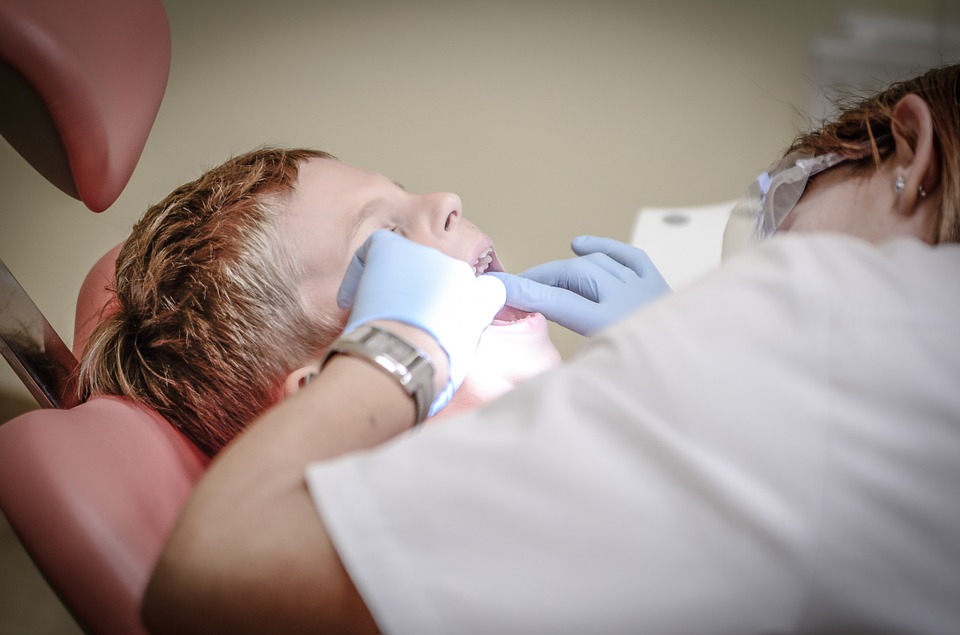
Root canal therapy is a critical dental procedure designed to save a tooth that is severely infected or decayed. While the idea of a root canal may seem intimidating, understanding the step-by-step process can alleviate anxiety and help you feel more comfortable about the treatment. At D. Dental, we pride ourselves on providing a seamless, patient-centered experience that prioritizes your comfort and ensures the best possible outcome. Here’s a detailed look at the step-by-step process of a root canal at D. Dental.
1. Initial Consultation and Diagnosis
The first step in the root canal process at D. Dental is the initial consultation. During this appointment, Dr. Ryan Daniel will conduct a thorough examination of your tooth to determine whether a root canal is necessary.
Comprehensive Dental Exam:
Dr. Daniel will begin by reviewing your dental history and discussing your symptoms. He will perform a visual examination of the affected tooth and may conduct tests such as tapping on the tooth or applying cold or heat to assess its sensitivity. These tests help determine the extent of the infection and whether the pulp inside the tooth is damaged.
Digital X-rays and Imaging:
To get a clear view of the tooth’s internal structure, digital X-rays or 3D imaging (CBCT scans) may be taken. These images allow Dr. Daniel to assess the health of the tooth’s roots and surrounding bone, identify any abscesses, and determine the complexity of the root canal system. This information is crucial for planning the procedure and ensuring its success.
2. Pre-Treatment Preparation
Once a root canal is deemed necessary, the next step is preparing for the procedure. This preparation involves ensuring that you are comfortable and informed about what to expect.
Patient Education:
At D. Dental, we believe that informed patients are empowered patients. Dr. Daniel will take the time to explain the root canal procedure in detail, addressing any questions or concerns you may have. Understanding each step of the process helps reduce anxiety and ensures that you feel confident about your treatment.
Anxiety Management and Sedation Options:
If you experience dental anxiety, we offer various sedation options to help you relax. These may include nitrous oxide (laughing gas) or oral sedation, both of which are safe and effective ways to keep you calm and comfortable during the procedure. Dr. Daniel will discuss these options with you and recommend the most appropriate choice based on your needs.
Local Anesthesia:
Before the procedure begins, local anesthesia will be administered to numb the area around the affected tooth. This ensures that you will not feel any pain during the root canal. Our team is skilled in administering anesthesia in a way that minimizes discomfort, even during the initial injection.
3. Accessing the Tooth and Removing the Infected Pulp
With the area numb and you feeling comfortable, the root canal procedure can begin. The first step is to access the interior of the tooth.
Creating an Access Opening:
Dr. Daniel will carefully create a small opening in the crown (top) of the tooth. This opening allows access to the pulp chamber and root canals, where the infected or damaged pulp tissue is located.
Removing the Infected Pulp:
Using specialized instruments, Dr. Daniel will gently remove the infected or inflamed pulp from the pulp chamber and root canals. The pulp is the soft tissue inside the tooth that contains nerves and blood vessels, and its removal is essential to eliminating the infection and preventing further damage.
Cleaning and Shaping the Canals:
After the infected pulp is removed, the root canals are thoroughly cleaned and disinfected. Dr. Daniel will use rotary endodontic instruments, which are advanced tools designed to efficiently clean and shape the canals. This step is crucial for removing any remaining bacteria and debris and ensuring that the canals are properly prepared for sealing.
4. Sealing the Tooth
Once the canals are cleaned and shaped, the next step is to fill and seal them to prevent re-infection.
Filling the Canals:
Dr. Daniel will fill the cleaned canals with a biocompatible material called gutta-percha. This rubber-like material is carefully inserted into the canals to fill the space left by the removed pulp. The gutta-percha is then compacted to ensure a tight seal, which helps prevent bacteria from re-entering the canals.
Temporary Filling or Permanent Restoration:
Depending on the specifics of your case, a temporary filling may be placed in the access opening to protect the tooth until a permanent restoration, such as a crown, can be placed. In some cases, the permanent restoration may be done immediately after the root canal. The temporary filling will safeguard the tooth until your next appointment, where the final restoration will be completed.
5. Post-Treatment Care and Recovery
After the root canal procedure is complete, the focus shifts to recovery and ensuring that the tooth heals properly.
Post-Treatment Instructions:
Dr. Daniel will provide you with detailed post-treatment care instructions to help manage any discomfort and promote healing. This may include guidelines on what to eat, how to care for your tooth, and when to take any prescribed medications. It’s important to follow these instructions closely to ensure a smooth recovery.
Managing Discomfort:
It’s normal to experience some mild discomfort or sensitivity in the treated area for a few days after the procedure. Over-the-counter pain relievers, such as ibuprofen or acetaminophen, can help alleviate any soreness. If you experience significant pain or swelling, it’s important to contact D. Dental immediately for further evaluation.
6. Follow-Up and Final Restoration
The final step in the root canal process involves follow-up care and restoring the tooth to its full function.
Follow-Up Appointment:
A follow-up appointment will be scheduled to assess the healing progress and discuss any concerns you may have. During this visit, Dr. Daniel will evaluate the treated tooth to ensure that it is healing properly and that there are no signs of re-infection. If a temporary filling was placed, this appointment will also involve the placement of a permanent restoration, such as a crown.
Permanent Restoration:
A crown is often recommended after a root canal to protect the tooth and restore its function. The crown covers the entire tooth, providing strength and preventing future fractures. At D. Dental, we offer high-quality crowns that are custom-made to match the color and shape of your natural teeth, ensuring a seamless and aesthetically pleasing result.
Ongoing Dental Care:
To maintain the health of your treated tooth and overall oral health, it’s important to continue practicing good oral hygiene and attending regular dental check-ups. Dr. Daniel and the team at D. Dental are here to provide ongoing support and care to help you maintain a healthy, beautiful smile.
Conclusion
A root canal at D. Dental is a carefully orchestrated process designed to ensure your comfort and achieve the best possible outcome. From the initial consultation to the final restoration, our team is committed to providing high-quality care every step of the way. With advanced technology, expert techniques, and a patient-centered approach, we make root canal therapy a positive and stress-free experience. If you’re in need of a root canal or have any concerns about your dental health, trust D. Dental to guide you through the process with compassion and expertise.



